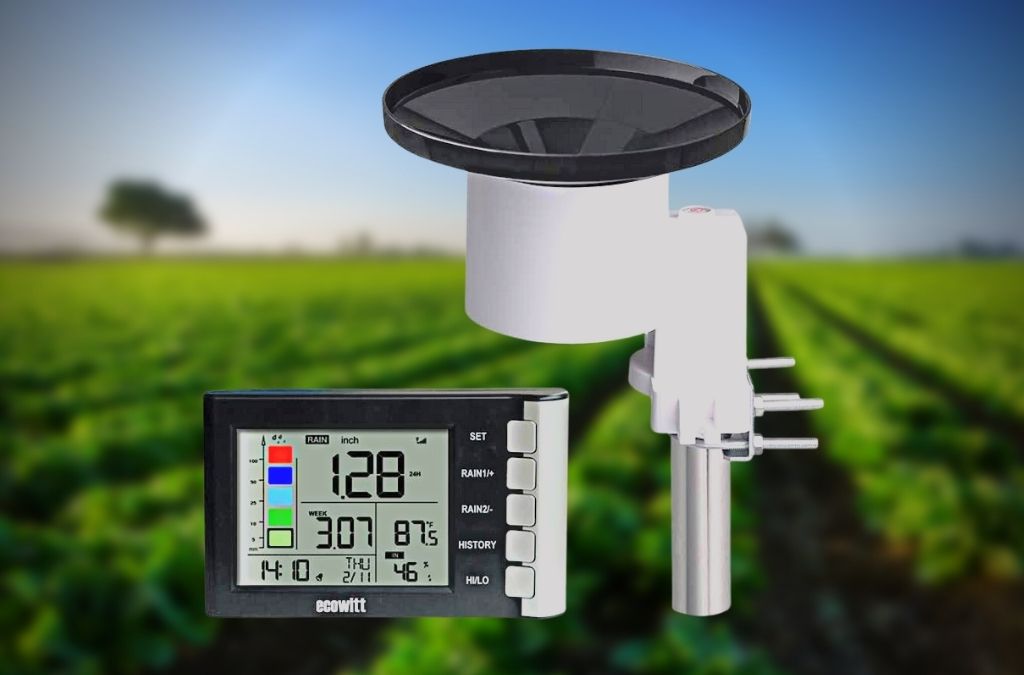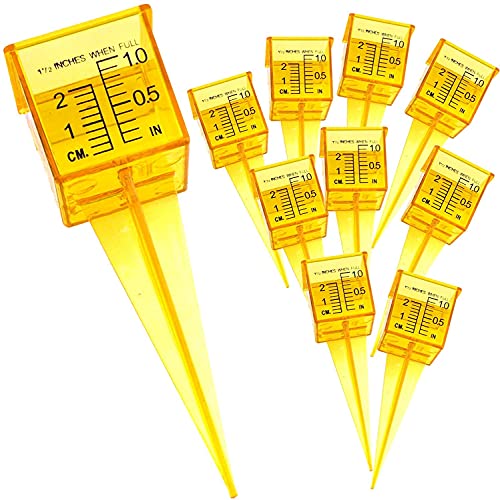A rain gauge is a weather instrument used to measure the amount of water that has fallen in an area over a given time. They can be found in many backyards, on construction sites, farms, schools, and at all-weather research facilities.
They are the most basic weather instrument and have been around for hundreds of years. Since 1441 to be precise. But, here is the question, “what is a rain gauge used for?”
In order to help you answer this, we have put together a list of things that rain gauges are used for.
A general answer to that question used for is, to measure the rain that has fallen in an area. More specifically, how much rain in that place, over a certain period of time. Collecting this data allows meteorologists and other interested weather enthusiasts to look at weather patterns to see if they are changing. We have all heard of climate change, and one of the measurements scientists rely on is rainfall.
The rain gauge was invented centuries ago, but it is fascinating to know it is still being used to measure the weather today. In fact, it is the most widely used tool to monitor climate in our modern world. Of course, there have been many technological advances from the original gauges. However, the basic principles are exactly the same.
There is one exception, the Weatherflow Tempest weather station uses haptics to measure the vibrations of rain hitting the sensor suite. This is the only rainfall measuring device where water is not actually collected.
Last update on 2025-08-19
Jump ahead to:
How Does A Rain Gauge Measure Our Climate?
A rain gauge is made up of a cylindrical cup or bucket with a funnel at the top. This object is then carefully positioned outdoors where there is no obstruction. The funnel captures and collects rainwater into the container beneath.
Rain gauges are designed in a way that dirt and debris can not easily fall into the container. Anything other than water in it will distort your readings. The total water captured after a storm or rainshower is then measured to see how much rain has fallen. A basic gauge may not be adequate in areas where there are high levels of rainfall. This is because they may overflow before you can get to read them. If you live in such an area, you may want to look to buy a self-emptying to ensure accuracy.
Although there are several types and many designs of rain gauges. Some look very scientific and technical, and others are made for aesthetics. However, they all work following the same concept.
What Can A Rain Gauge Tell Us?
Monitor Drought
One of the most prominent uses of it is in the agricultural sector. Using a rain gauge to measure rainfall gives farmers and ranchers valuable information over short or long periods of time. They can observe patterns and historical data to know if there is an increase or deterioration in rainfall in a particular area.
Rainfall data helps farmers know if crops have enough water, or if they need to irrigate them. It will help ranchers know which areas of their property may be subject to flooding and where is best to move their herd. With accurate rainfall data, these professions can plan out crop rotations and herd placements to maximize their land.
It also helps farmers to know if the weekly or monthly rainfall may cause erosion or flooding.
Using accurate information from this instrument, farmers can prepare for what is to come and plan ahead.
This is also true for metropolitan areas where there is not a lot of rainfall. Monitoring water levels allow authorities to issue alerts for residents to start reducing water use. If dam levels for a particular year are lower than they usually are at a certain time, historical rainfall data can help predict future levels. The same principles apply to avid gardeners and all-weather enthusiasts.
Using A Rain Gauge To Predict Weather-Related Hazards
Meteorologists rely heavily on rain gauges for monitoring current and historical conditions and predicting natural disasters.
They have rain gauges installed all over the country that constantly monitor rainfall. A high level of rain could result in flooding or landslides. In areas prone to these hazards, having accurate and up-to-date information is vital. Data from rain gauges alert the meteorologist in time to warn the appropriate authorities so that people in the path can prepare. This will save crops and livestock, buildings, and even potentially lives.
With many networks now collecting weather data from personal home weather stations, meteorologists can access much more information. This allows them to be more accurate in their weather predictions. And, with many consumers adopting self-emptying rain gauges connected to the internet, this will only improve. One company are specialists in this area so read our review of the Acurite range of rain gauges.
Academic And Scientific Use Of Rain Gauges
This is another important use of rain gauges all over the world. They are used in schools to teach students in science courses such as geology, agricultural science, and geography. Rainfall and its patterns are important for all these areas.
Rain gauges are also used by institutes involved in climate research to collect data. For instance, an institute may record data of the rainfall in a certain environment, and how it differs from other areas. This may give vital information regarding weather patterns and how geography impacts rainfall.
A rain gauge is an important tool for scientific research, so it is important that students learn how to use them. You don’t learn to use a rain gauge without one right?
Building Infrastructure
Building infrastructure such as roads, bridges, and drainage systems is climate-sensitive. An unexpected rise in water levels or a heavy downpour could ruin a project or slow down construction. So, in order to proceed with an infrastructure project, the project managers must consider imminent weather conditions. This is where data collected from various rain gauges is imperative.
Consider the construction of a bridge or drainage system, where a sudden rise in water level caused by heavy rainfall could cause expensive damages. But, with the use of a rain gauge, the situation can be detected and precautions are taken.
Of course, there are modern technologies like satellites and radars that also help measure rainfall. These are used by meteorologists too. However, in order to measure and gauge the amount of rainfall, using a basic rain gauge is absolutely necessary. Management will be able to make decisions on whether to pause the construction project or continue.
Personal Usage Of A Rain Gauge
Rain gauges are the most common weather instrument used around the world and are found in many backyards. Many school projects over the years have involved children building their own and learning to measure rainfall.
For gardening enthusiasts, a rain gauge provides vital information for healthy plants. The number of water plants need will vary with each season and environment. Usually, most gardens will need some water at least weekly during the warmer months. These instruments help determine how much water your garden will need. It will not only measures precipitation but mist and dew.
If you love your lawn, there is even a rain gauge that can measure the moisture applied to your grass. Sprinkler gauges placed around your yard will measure any dry spots or those being over-watered.
Conclusion
A rain gauge is an essential weather instrument with the sole function of measuring rainfall or precipitation. However, knowing current and historic rainfall data is vital for many people.
Agriculturalists, farmers, weather enthusiasts, ranchers, gardening gurus, and landscapers all rely on data provided by the humble rain gauge. In fact, scientific research on climate change, project managers on construction sites, and even meteorologists need the data provided by these nifty devices.
Why not look at getting your own personal rain gauge? Not only will you have a great-looking lawn and garden, but you may also even help save the planet by providing essential data!
Try these articles to save money on your energy bills:










